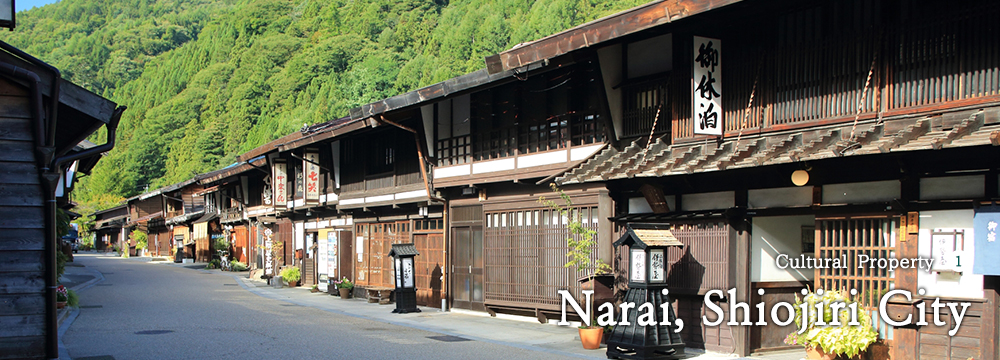
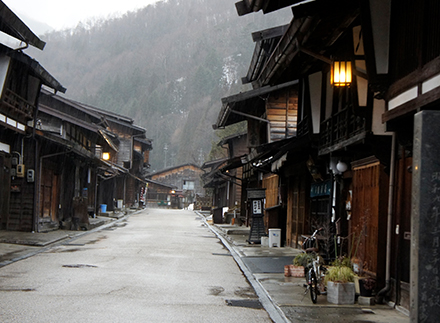
Story
Located at the northern foot of Toriitouge Pass, one of the most difficult passes on the Nakasendo Road, Narai-juku is an important post town, where industries of cypress items, lacquerware, and painted combs thrive. It remains nearly as it was in its heyday.
Overview
Narai-juku is a large-scale post town – twice as large as Niekawa-juku. It is located 256 km from Tokyo and 4 km from Niekawa-juku and Yabuhara-juku.
A document states “Yoshiari Kiso established Sen’nenji Temple in 1532. He formed a post town in Kiso in 1533.” Narai-juku was already functioning as a post town in the mid-16th century.
With the Tokugawa Shogunate's establishment of the post town system in 1601, Narai-juku developed into an early modern post town.
Points of Interest
Narai-juku was not incorporated along a new national road when an improvement was made to the road in the Meiji period. Thus, the old townscape has been well preserved until now, and was designated as a Preservation District for Groups of Traditional Buildings in 1978.
Ryokan (Japanese-style inn) stand as it was in the Edo period, old honjin is used as a community center, and Tezukas' Residence is open to the public as Kamitoiya Museum. These buildings tell the history.
The trail up to Toriitouge Pass is maintained as a walking trail through the restoration of the old Nakasendo’s cobblestone road.
Interview
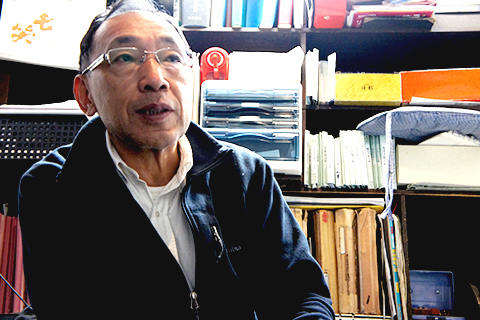
Mr. Yuji Ota, the chairman of the Narai Townscape Preservation Committee
We interviewed Mr. Yuji Ota. He is the chairman of the Narai Townscape Preservation Committee.
The committee has frequent discussions about restoring the old-fashioned townscape and conducts annual renovations as requested by the residents to make the townscape more interesting.
“We try to restore the Narai-juku of the old days by setting lattices onto buildings and roofs,” Mr. Ishii added.
“Now you can see a restored old-fashioned post townscape. It has taken a whole lot to reach this point,” he continued,
“I’m very proud that so many people in Narai cherish the area. We share a common idea of preserving the townscape. We make efforts to restore the old post town townscape as much as possible.”
We sensed his strong determination to protect the town.
“The townscape of Narai-juku is remarkable.”
“A town that has both a nice landscape and townscape is rarely seen, is it not?
We are glad you feel close to the mountains, the townscape, and the history when you visit here.
Many visitors say how close the mountains are and how tidy the townscape is, and this makes me more motivated.
The town is crowded with many people in spring, summer, and autumn. The town is at the highest altitude in the upstream area of the Naraigawa River so it is especially cold. The Narai-juku Ice Candle Festival is held on February 3 every year, and you can see a dreamy and mysterious world. Visitors often say that they feel as if they have slipped back in time to the old days.”
Mr. Ota spoke to us passionately about the preservation of Narai-juku’s townscape.
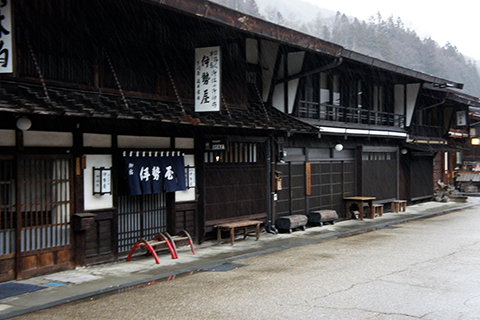
Narai-juku goes on for 1 km.
“The post town of Narai covers a very long area. I think a post town stretching 1 km is rare.
And several temples stand in the post town. Isn’t it rare that there are five temples on a 1 km long street?
Come and see the old townscape that we preserve!” he continued,
It was rainy when we interviewed him, but the rain made the old-fashioned townscape all the more impressive.
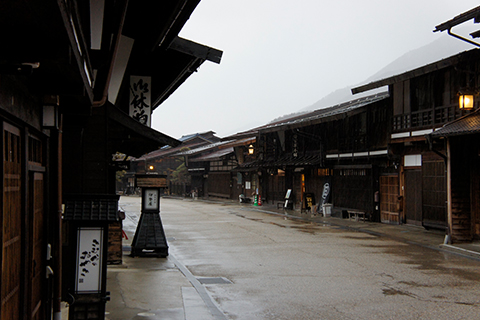
Narai-juku in the rain also has its own ambience.
“There are some empty houses now in Narai-juku.
If you are interested in living here or doing business here, come and visit us. We’ll guide you,” he said.
Don’t you think it would be wonderful to live in a remarkable, old town like Narai?
Attractions
A post town street of 1 km plus a museum housed in a historical building from the Edo period, ryokan (Japanese-style inn), and much more.
Access
From the closest station & interchange
From Narai Station on the JR Chuo Line
3-minute walk
From the Ina Interchange on the Chuo Expressway
From the Ina Interchange on National road 361, 40 minutes by car
From the Shiojiri Interchange on National road 19, 35 minutes by car
Address
Narai, Shiojiri City, Nagano Prefecture